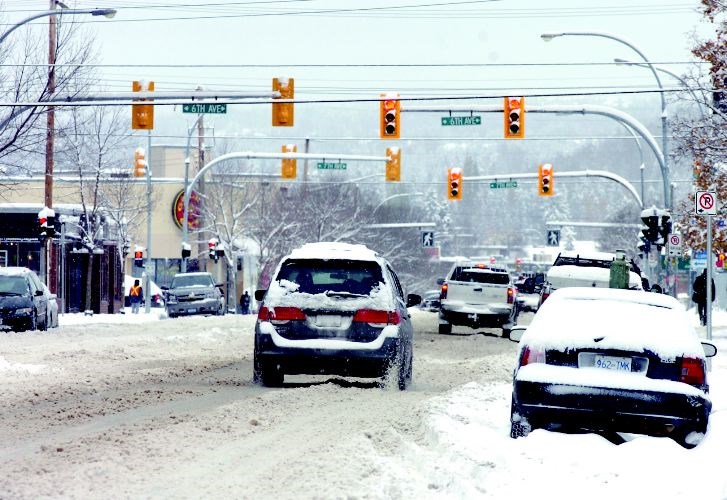The winter traction material spread on Prince George streets doesn't do enough damage to the asphalt to prompt a switch over to sand, according to the city's transportation manager.
Division head Alan Clark submitted a report to last night's city council meeting outlining the use of fracture and its effects on local roads.
Fracture is a manufactured aggregate product applied after snow clearing where the largest particle is no bigger than 12.5 millimetres. It does not contain any silt and is also said to create less dust than sand. It is used when it's too cold for salt.
The report touches on the variety of reasons for asphalt deterioration throughout the winter, including freeze-thaw events, traffic volumes, the age of asphalt and the use of studded tires.
"Fracture as a cause for asphalt deterioration cannot be dismissed," Clark said, "but it is only one of several influences on our roadways."
Prince George has since been used as an example of a best practice for the Ministry of Water, land and Air Protection for its use of fracture to cut down on road dust.
The city began using it on downtown and on arterial roads in 1997, when it cost $10.70 per tonne.
The city paid $4.50 per tonne in 2011 - a total cost of $62,400 for 13,868 tonnes - but the price has gone up again this year, to a cost of $7.50 per tonne.
According to Clark's report, the city could save $21,000 based on last year's tonnage if they made the switch to sand, but cautioned that it might not be a straight comparison.
"Our experiences with fracture also show that the fracture material remains in place for substantially longer than conventional sand, reducing the amount of times we have to apply the material," Clark wrote.
The amount of fracture used in any year depends on how much it costs, snow fall patterns (the more often snow has to be cleared, the more it gets applied), and temperature.



